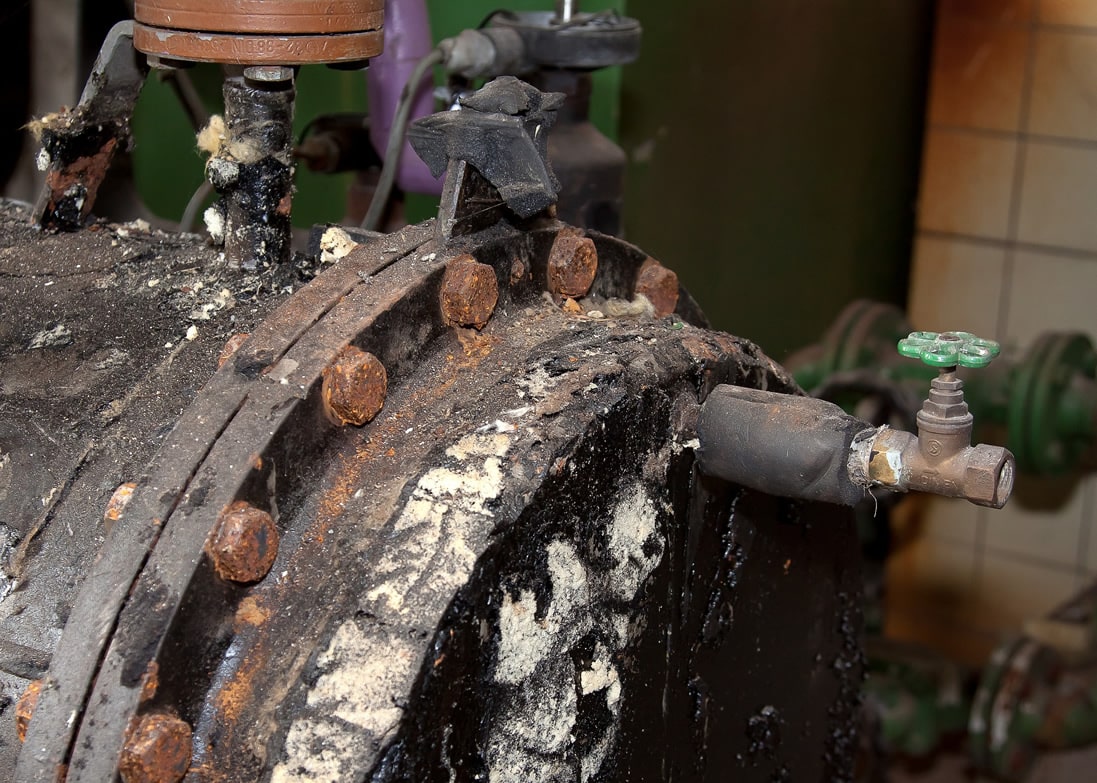
Hard water and high temperature – ideal conditions for scale formation
In the water industry, drinking water is often piped over long distances to the end user. The chemical and biological processes that can significantly reduce its quality are thus becoming more widespread.
If the water contains ions, these ions start to precipitate and form mobile sludge or settle when conditions change (temperature, flow rate). Scale is formed, which restricts the flow of water through the pipe, increases the pressure on the pipe walls and contributes to corrosion.
Drinking hard water is not particularly limiting to humans. A reasonably hard one is even good for health. Excessively hard water, however, can be hazardous to human health, as it deposits large quantities of minerals in the body, which are a burden, particularly on the kidneys.
Hard water – the solution from which limescale crystallises
Limescale forms in pipes and equipment through which mainly hot water flows. The hotter the water, the more it is deposited. In households, limescale reduces the life of instantaneous heaters, dishwashers, washing machines and kettles. Soap and other detergents dissolve less easily in hard water. Their disinfecting and cleaning effects are therefore reduced.
Corrosion of metal materials is a concomitant of limescale formation. However, this is also caused by water that does not contain any additional ions. Only the oxygen contained in the water is sufficient to cause corrosion. The water itself has oxidising properties due to the water. Other dissolved gases also contribute to corrosion, such as carbon dioxide or ammonia, which can enter the water in trace amounts as a contaminant.


Mechanism of scale formation
The elements involved in limescale formation are found in water in the form of ions. If the solubility coefficient is exceeded, precipitates form and settle on the inner walls of the pipe. The deposits may also float freely. Scale also serves as a solid base for bacteria growing in biofilms. With its detached parts, it effectively spreads throughout the water supply network.
Calcium and magnesium salts – the main components of limescale
Salt is formed by the union of an acid anion and a cation of a particular element (usually a metal). The cation is positively charged, the acid residue carries a negative potential. The resulting compound is neutral.
Each salt crystallizes in a different system. Under an electron microscope we can see a porous jumble of needles, cubes, spheres and other formations.

Most commonly, limescale contains the following salts:
- Calcium carbonate
- Calcium bicarbonate
- Calcium sulfate
- Magnesium carbonate
- Magnesium sulfate
Other minor compounds may also be present in lime scale:
- Iron ore deposits (krevel)
- Magnetite
- Zinc oxide
Free elements such as magnesium, silicon, phosphorus, zinc, copper and sulphur may also be found. Carbonate and calcium bicarbonate still remain the most common constituents of lime scale.
Formation of carbonate deposits
CaCO3 + CO2 + H2O = Ca2+ + 2HCO3−
The reaction proceeds in both directions
How water hardness is measured – formerly in German degrees, now in millimoles
Water hardness used to be measured in German degrees (1 degree was 10 mg of calcium oxide or 7.2 mg of magnesium oxide per litre). Today, hardness is defined as the sum of the calcium and magnesium concentrations. The unit is millimoles per litre. The standard, now abolished, used to state that the hardness of hot water should not exceed 6°dH (source Wikipedia)
Note: The mole is a unit of substance quantity and one of the SI base units. It expresses the number of particles of any substance in one litre.
Methods of descaling piping systems
- Chemical methods – mineral salt deposition inhibitors are used. For example, a mixture containing ethylene glycol is added to water for heating systems. The addition of phosphates in turn stabilises the hardness. Limescale can also be dissolved with acids.
- Mechanical removal – deposits are drilled, scraped or disturbed by vibration.
Theory put into practice – how to get rid of hard water in industry and in the home
- Water softeners – work on the principle of ion exchange. Calcium and magnesium ions are exchanged for sodium ions using a special cartridge.
- Electrolytic hot water treatment plants – protect boilers and their distribution systems, heat exchangers and hot water pipes. Water softening is based on the principle of electrocoagulation. Under the influence of direct current, iron and other insoluble impurities precipitate into flakes that are captured by the filters.
- Reverse osmosis – Reverse osmosis is a membrane method. It is a non-selective method, which means that it removes all ions without any difference in charge. The RO method is ideal when the goal is to produce demineralized water for laboratory use and also in many industrial applications. For drinking purposes, the method is unsuitable.